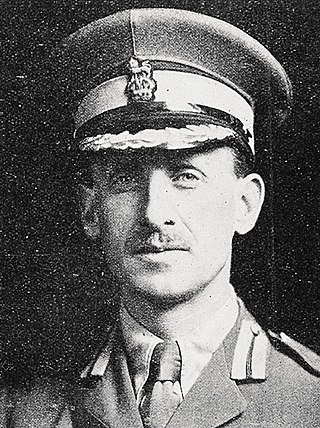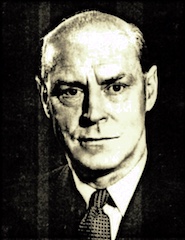Related Research Articles

Plastic surgery is a surgical specialty involving the restoration, reconstruction, or alteration of the human body. It can be divided into two main categories: reconstructive surgery and cosmetic surgery. Reconstructive surgery includes craniofacial surgery, hand surgery, microsurgery, and the treatment of burns. While reconstructive surgery aims to reconstruct a part of the body or improve its functioning, cosmetic surgery aims to improve the appearance of it. A comprehensive definition of plastic surgery has never been established, because it has no distinct anatomical object and thus overlaps with practically all other surgical specialties. An essential feature of plastic surgery is that it involves the treatment of conditions that require or may require tissue relocation skills.

A cleft lip contains an opening in the upper lip that may extend into the nose. The opening may be on one side, both sides, or in the middle. A cleft palate occurs when the palate contains an opening into the nose. The term orofacial cleft refers to either condition or to both occurring together. These disorders can result in feeding problems, speech problems, hearing problems, and frequent ear infections. Less than half the time the condition is associated with other disorders.

Sir Harold Delf Gillies was a New Zealand otolaryngologist and father of modern plastic surgery.

Sir Archibald Hector McIndoe was a New Zealand plastic surgeon who worked for the Royal Air Force during the Second World War. He improved the treatment and rehabilitation of badly burned aircrew.
Oral and maxillofacial surgery is a surgical specialty focusing on reconstructive surgery of the face, facial trauma surgery, the oral cavity (mouth), head and neck, and jaws, as well as facial cosmetic surgery/facial plastic surgery including cleft lip and cleft palate surgery.

Reconstructive surgery is surgery performed to restore normal appearance and function to body parts malformed by a disease or medical condition.

Orthognathic surgery, also known as corrective jaw surgery or simply jaw surgery, is surgery designed to correct conditions of the jaw and lower face related to structure, growth, airway issues including sleep apnea, TMJ disorders, malocclusion problems primarily arising from skeletal disharmonies, and other orthodontic dental bite problems that cannot be treated easily with braces, as well as the broad range of facial imbalances, disharmonies, asymmetries, and malproportions where correction may be considered to improve facial aesthetics and self-esteem.
Simon Hullihen MD, DDS was a dental surgeon born in Point Township, Pennsylvania. He completed his medical degree and then was inspired to seek a career in oral and maxillofacial surgery. Regarded as the first oral surgeon in the United States, he helped to develop many modern techniques of maxillofacial surgery and contributed to the establishment of oral and maxillofacial surgery as a surgical specialty.
David Ralph Millard, Jr. was a plastic surgeon who developed several techniques used in cleft lip and palate surgeries. He also popularized the double eyelid surgery or "Asian blepharoplasty" to “deorientalize” patients’ faces while stationed in South Korea during the Korean War. He was chief of the Division of Plastic Surgery at University of Miami's Miller School of Medicine for 28 years, and maintained a private practice in Miami.

Henry Percy Pickerill (1879–1956) was a British-born New Zealand dental surgeon and researcher, university administrator and plastic surgeon. Pickerill made major contributions to several fields of dentistry and plastic surgery both in New Zealand and overseas.
Murari Mohan Mukherjee was an Indian plastic surgeon from Kolkata, West Bengal, India.
Dr. Chakkiri Balakrishnan (CBK) (1918–1997) was a plastic surgeon from India who was a pioneer of modern plastic surgery in India, when he established second independent Department of Plastic Surgery in India, at the Medical College Hospital, Nagpur, in 1958.
Peter James Taub, MD, FACS, FAAP, is an American Professor of Surgery, Pediatrics, Dentistry, Neurosurgery, and Medical Education at the Icahn School of Medicine at Mount Sinai as well as Attending Plastic and Reconstructive Surgeon at the Mount Sinai Medical Center and Elmhurst Hospital Center, all in New York City. He is a diplomate of both the American Board of Surgery and the American Board of Plastic Surgery.

Harold Laurens Dundas Kirkham was an Anglo-American plastic surgeon. He was the first Professor of Plastic Surgery at Baylor University, Texas and also served with the US Navy Medical Corps, becoming head of plastic surgery at the United States Naval Medical Center San Diego during the Second World War.
The Overseas Plastic Surgery Appeal is a registered charity in the UK, that exists to provide free facial surgery for poor children and young adults in Pakistan. The OPSA team operate on facial abnormalities including cleft lip and palate.

Arthur Rainsford Mowlem (1902–1986), born in New Zealand, was the youngest of the four plastic surgeons who practised in between the world wars in Britain. In 1936, he joined the London-based partnership that was started by Sir Harold Gillies and included Sir Archibald McIndoe and Thomas Pomfret Kilner. He continued to practise until his retirement in 1963. During the Second World War he was involved in early bone grafting and took part in early trials for penicillin at his unit in Hill End Hospital, St Albans.

Dr. Ravin Laxman Thatte is a doyen a professor in the field of Plastic and Reconstructive Surgery, a teacher to most plastic surgeons in India, an Indian philosopher and an active environmentalist.
Hirji Sorab Adenwalla was an Indian missionary who joined the Jubilee Mission in Kerala, India, as a surgeon. Adenwalla turned what was originally a small dispensary into a 1500-bedded medical college and research institute called the Jubilee Mission Medical College. Adenwalla specialized in cleft lip and cleft palate surgeries, providing treatment at low or no cost to more than 21,000 patients. Adenwalla contributed several new techniques to the cleft lip surgery, such as a method to avoid a vermillion notch, a protocol for cleft lip nose correction in unilateral cleft lips, and a procedure for septal repositioning.
Ian Fraser Muir was an English plastic surgeon at the West Middlesex Hospital and Mount Vernon Centre for Plastic Surgery. While working there he developed what became known as the 'Muir and Barclay formula' which estimates the volume of fluid replacement required in the initial resuscitation after major burns. In 1969, he relocated to Aberdeen to set up the plastic surgery and burns unit, having been appointed plastic surgeon and senior lecturer in Surgery at the University of Aberdeen. He was elected president of the British Association of Plastic Surgeons
Norman Rowe, was a British oral and maxillofacial surgeon who was a defining influence in the development of oral and maxillofacial surgery in the United Kingdom.
References
- 1 2 3 "In Memoriam: Professor T.P. Kilner (1890–1964)". Annals of the Royal College of Surgeons of England. 35 (4): 251–4. October 1964. PMC 2311759 . PMID 14245883.
- ↑ Kilner TP. "Cleft Palate". Speech. 2 (3): 1–9.
- ↑ "Obituary". The Lancet. 284 (7350): 103–104. 11 July 1964. doi:10.1016/S0140-6736(64)90116-3.
- ↑ "Home - Plarr's Lives of the Fellows Online". Royal College of Surgeons of England. Retrieved 1 February 2018.
- ↑ "Thomas Pomfret Kilner, C.B.E., D.M. (Oxon.), F.R.C.S. (Eng.) (1890–1964)". British Journal of Surgery. 51 (12): 945–946. 1 December 1964. doi:10.1002/bjs.1800511220.
- ↑ Battle R (1964). "Thomas Pomfret Kilner, C.B.E., D.M., F.R.C.S." British Journal of Plastic Surgery. 17: 330–334. doi: 10.1016/S0007-1226(64)80058-8 . PMID 14218954.